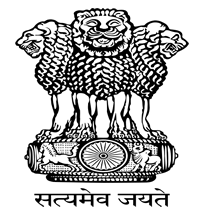India: Government
Key Figures
- Chief of State:
- President Droupadi Murmu
- Head of Government:
- Prime Minister Narendra Modi
Overview
- Government Name:
- Republic of India
- Constitution:
- Adopted: 1950; Lays down the framework for fundamental political principles, establishes structure, and sets out fundamental rights.
- Government Type:
- Federal Parliamentary Republic

Index of Economic Freedom
Country Risk Rating
Government Branches
| Main Powers | Election Process | Election Cycle 1 | |
|---|---|---|---|
| Executive | The president serves as commander-in-chief, can grant pardon or reduce the sentence of a convicted person, and appoints various governors and other positions. |
The president is indirectly elected by an electoral college. |
5 years |
| Judicial | Enforces fundamental rights; issues directions, orders, or writs; and may direct the transfer of any civil or criminal case. |
Appointed by the president. |
Life appointment |
| Legislative | Lok Sabha and Rajya Sabha are the main legislative bodies of government that are responsible for executing the legislative tasks of the government. |
The Rajya Sabha has 233 members who are indirectly elected by the state legislatures. The Lok Sabha has 543 members who are elected by plurality vote in single-member constituencies and 2 members who are appointed by the president. |
Lok Sabha: 5 years; Rajya Sabha: 6 years |
Regional Trade Blocs
International Organization Participation [2]
Environmental Agreements [3]
Tax Information [2]
- Tax Authority:
- Central and State Governments
- Tax Name:
- VAT and CST
Sources:
- ElectionGuide http://www.electionguide.org/
- EY, http://www.ey.com
- CIA World Factbook, https://www.cia.gov/the-world-factbook/
- U.S. Bilateral Relations Fact Sheets http://www.state.gov/r/pa/ei/bgn/


